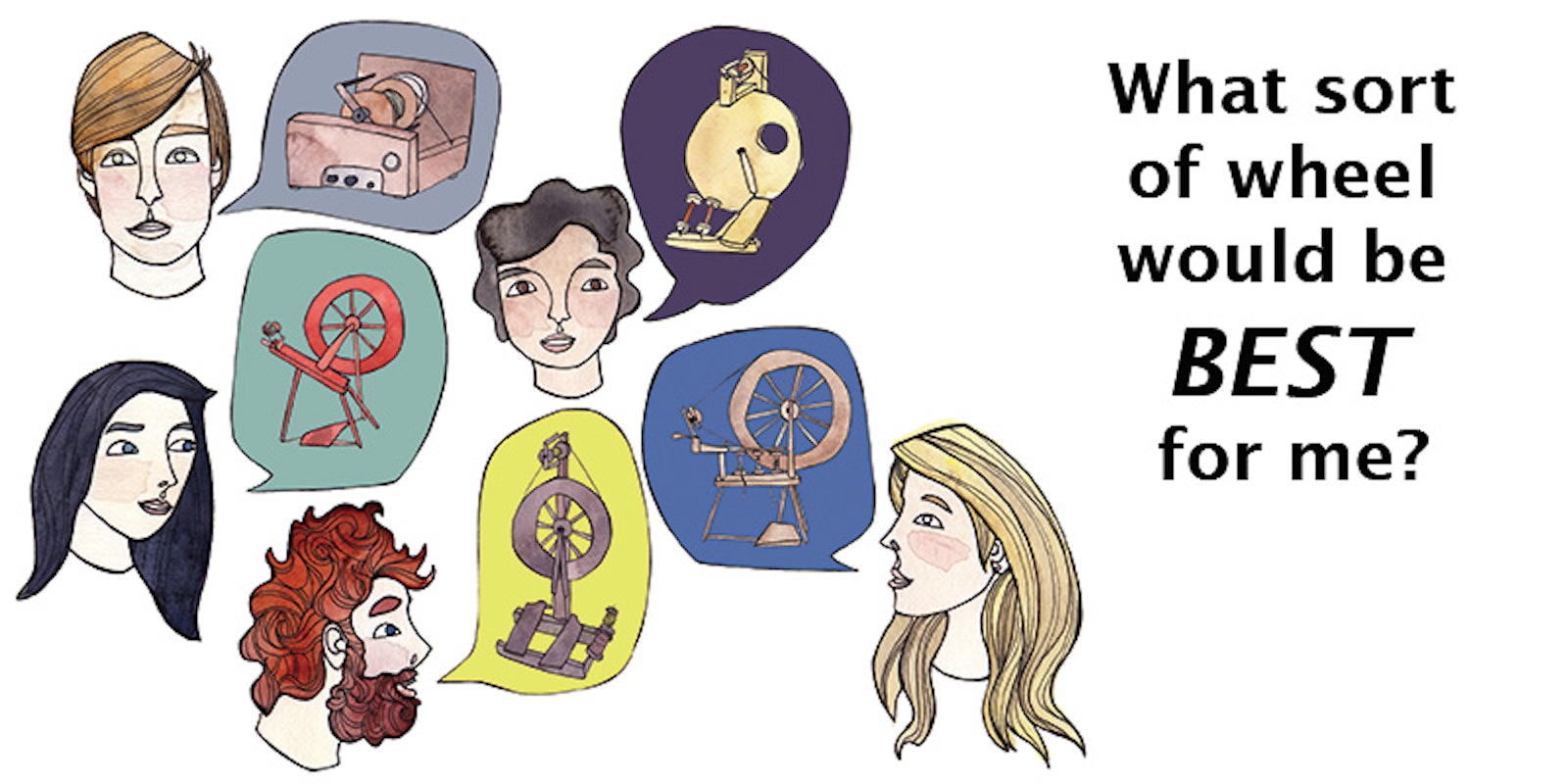Carol Leonard has been teaching spinning for many years, and the number one question her new spinning students ask is how to choose a first spinning wheel. In the Spring 2017 issue of Spin Off, Carol helps guide spinners who are deciding what spinning wheel to buy—arguably the biggest purchase for their craft! Need advice? Read on!
Let us assume that we are talking about your very first wheel. It may be that at this point there is no choice to be made because if you have been given or inherited a wheel, that is where you will start. But if you have been attending a class or using a borrowed wheel and have fallen hopelessly in love with spinning (as you do!), then you do need to find your very first spinning wheel.
And I can’t tell you which one it should be.
That might seem a little mean, but all the modern wheels that I am aware of are great, each with a whole lot to recommend it—yet each has different features and attributes. A decision must be made, and the only person who can make that final choice is you.
Option 1: Shiny New Wheel
Perhaps you are fortunate and can afford to go out and buy a brand-new wheel. The best advice a spinning teacher can give you is to try as many as possible. Maybe your teacher has a number of different wheels for students to learn on in class—try them all. If you have a guild or spinning group near you, go along as a visitor and ask nicely if any members are prepared to talk to you about their wheels and let you have a go. Find your nearest vendor or fiber show, treat yourself to a lovely day out, and sample yet more wheels.
There are 3 things that you can consider:
- Do you have any physical issues that might make a difference? Something as simple as being tall or short might mean that you would prefer a wheel with a higher or lower orifice/flyer.
- How portable do you want your wheel to be? This is one of the big questions these days, as so many of us travel to workshops and shows.
- Do you want your flyer to be on the left or right of the wheel, or would an upright work better for you?
Ask yourself these sorts of questions as you learn to spin and talk to as many people as possible. If you don’t have a group nearby, see what online forums you can find (try Facebook and Ravelry) and ask questions there.
Illustration by Katie Eberts.
Option 2: Pre-loved Wheel
Many of us only have the budget for a pre-loved wheel, and there’s nothing wrong with that. I actually think it is a good idea to go for this anyway; no matter how much research you do, your first purchase could turn out not to be a lifetime favorite!
Still, you should probably follow most of the recommendations for buying a new wheel. Previously owned wheels can be tracked down via many of the same sources, plus one or two more, which may depend on where you live. Taking eBay as an example available to most of us, proceed with some caution. It is extremely difficult to see what a wheel is really like just from a photograph. If the price is low, it may be worth taking a gamble, but it is not a safe option! The same goes for bargain finds in antiques or secondhand shops. Try out the wheel for yourself before purchasing and enlist a more experienced friend to help out if at all possible.
CAROL LEONARD has been addicted to fiber and spinning for many years and is well known as a teacher in the United Kingdom. She lives in a stone-built cottage in West Yorkshire with her spinning and weaving husband and a collection of Snowshoe cats. Her collection of wheels outnumbers her housemates, and their joint collection of spindles probably outnumbers the population of their neighborhood.


